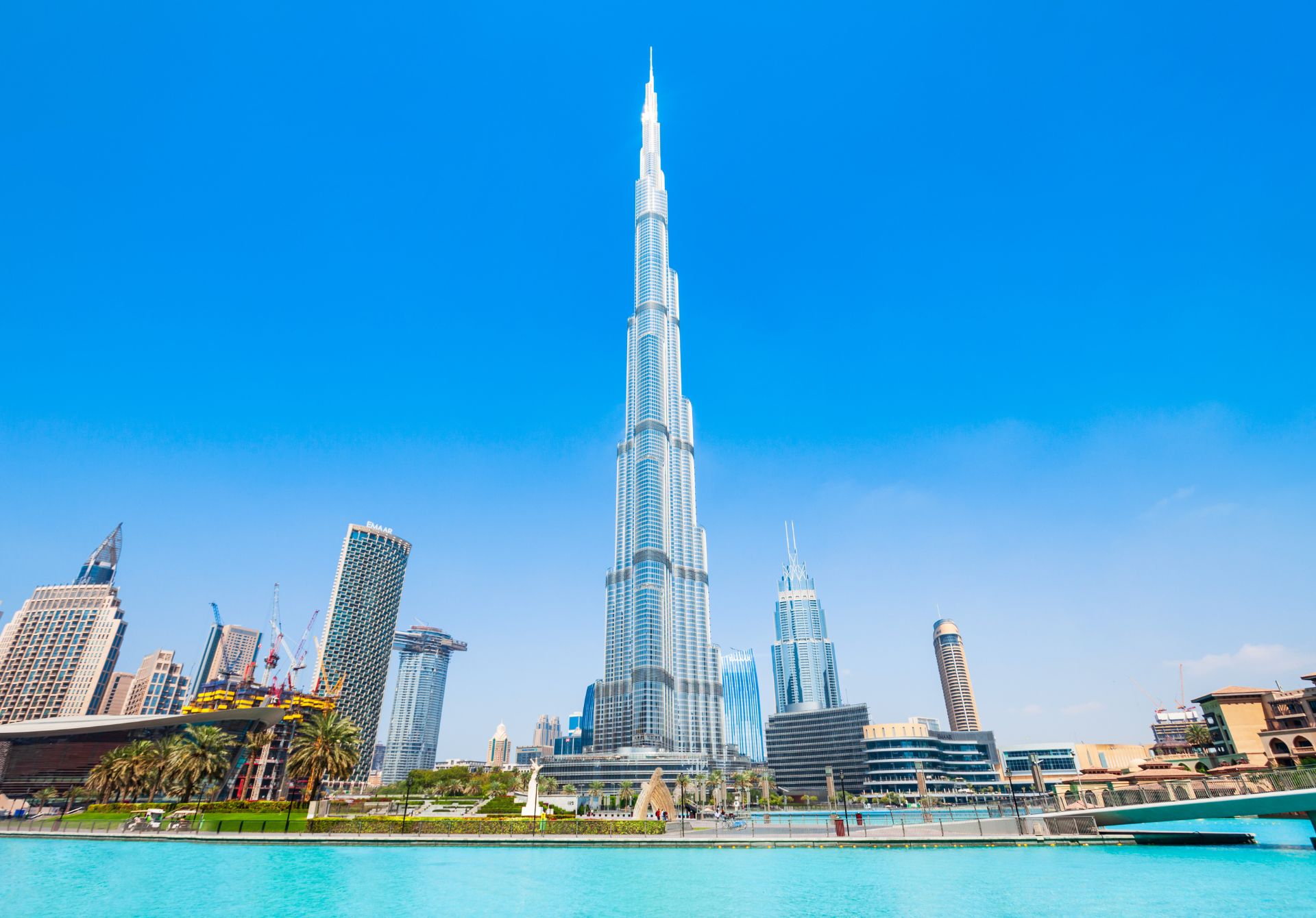Dubai, a city that has transformed from a modest fishing village to a global metropolis in just a few decades, is home to two of the most iconic symbols of its rapid development: the Burj Khalifa and Sheikh Zayed Road. These landmarks not only represent the architectural and infrastructural prowess of the United Arab Emirates but also serve as testaments to the nation’s ambitious vision for the future.
The Burj Khalifa: Reaching for the Sky
Standing at an awe-inspiring height of 828 meters (2,717 feet), the Burj Khalifa has held the title of the world’s tallest building since its completion in 2010. This architectural marvel is more than just a skyscraper; it’s a symbol of human ingenuity and the UAE’s commitment to pushing boundaries.
Engineering Marvel
The construction of the Burj Khalifa was a feat of engineering that required innovative solutions to overcome the challenges posed by its unprecedented height. The building’s Y-shaped plan, inspired by the Hymenocallis flower, is not just aesthetically pleasing but also serves to reduce wind forces on the tower. The structure utilizes a buttressed core, which provides exceptional stability and allows the tower to reach such great heights.
Economic Impact
Beyond its architectural significance, the Burj Khalifa has had a profound impact on Dubai’s economy. The tower has become a major tourist attraction, drawing millions of visitors each year. In 2019 alone, the observation deck “At the Top” received over 1.7 million visitors. The building has also contributed to Dubai’s real estate market, with apartments in the Burj Khalifa commanding premium prices and serving as status symbols for the global elite.
Sheikh Zayed Road: The Artery of Modern Dubai
Running parallel to the coastline, Sheikh Zayed Road is the main artery of Dubai and one of the most important highways in the UAE. Named after the country’s founding father, Sheikh Zayed bin Sultan Al Nahyan, this road has played a crucial role in Dubai’s development and continues to be a symbol of the city’s modernity and progress.
From Desert Track to Superhighway
Sheikh Zayed Road’s transformation mirrors that of Dubai itself. What was once a modest desert track connecting Abu Dhabi to Dubai has evolved into a 14-lane superhighway flanked by some of the most impressive skyscrapers in the world. The road’s expansion has been pivotal in supporting Dubai’s rapid growth, facilitating the movement of people and goods across the emirate.
A Showcase of Architectural Marvels
The stretch of Sheikh Zayed Road between the Dubai World Trade Centre and the Burj Khalifa is often referred to as “Dubai’s Manhattan” due to its impressive skyline. This section of the road is home to numerous architectural wonders, including the Emirates Towers, the Dubai World Trade Centre, and the iconic Dubai Frame. The concentration of high-rises along this corridor has made it one of the most photographed urban landscapes in the world.
The Synergy Between Icons
The Burj Khalifa and Sheikh Zayed Road are not just individual landmarks; they represent a synergy that has come to define Dubai’s urban landscape. The Burj Khalifa, situated just off Sheikh Zayed Road, serves as the crown jewel of the highway’s impressive skyline. This proximity has created a unique urban environment where vertical ambition meets horizontal expansion, embodying Dubai’s multifaceted approach to development.
Impact on Urban Planning
The presence of these two icons has significantly influenced Dubai’s urban planning strategies. The development along Sheikh Zayed Road has followed a transit-oriented model, with the Dubai Metro’s Red Line running parallel to the highway. This integration of transportation and high-density development has created vibrant, mixed-use communities that are reshaping the concept of urban living in the Middle East.
Cultural and Social Significance
Beyond their physical presence, the Burj Khalifa and Sheikh Zayed Road have become deeply ingrained in Dubai’s cultural identity. They feature prominently in marketing campaigns, serve as backdrops for events and celebrations, and have become symbols of national pride. The New Year’s Eve fireworks display at the Burj Khalifa, for instance, has become a globally televised event, attracting hundreds of thousands of spectators along Sheikh Zayed Road and millions of viewers worldwide.
Challenges and Future Prospects
While the Burj Khalifa and Sheikh Zayed Road represent remarkable achievements, they also face challenges. The high concentration of development along Sheikh Zayed Road has led to traffic congestion issues, prompting authorities to invest heavily in public transportation solutions. Additionally, the environmental impact of such large-scale developments has come under scrutiny, leading to increased focus on sustainable building practices and green initiatives in newer projects.
Looking to the future, both the Burj Khalifa and Sheikh Zayed Road are likely to remain central to Dubai’s urban landscape, but their roles may evolve. Plans are underway to further enhance public spaces around these landmarks, creating more pedestrian-friendly environments and green spaces. There’s also a push towards smart city initiatives, which could see these icons become testbeds for cutting-edge urban technologies.
The Burj Khalifa and Sheikh Zayed Road stand as powerful symbols of Dubai’s ambitious vision and rapid transformation. From the engineering marvels of the world’s tallest building to the dynamic urban corridor that is Sheikh Zayed Road, these landmarks embody the spirit of innovation and progress that defines modern Dubai. As the city continues to evolve, these icons will undoubtedly play crucial roles in shaping its future, serving not just as physical structures but as inspirations for generations to come. They remind us of what can be achieved when vision, ambition, and engineering prowess come together, setting new standards for urban development on a global scale.
